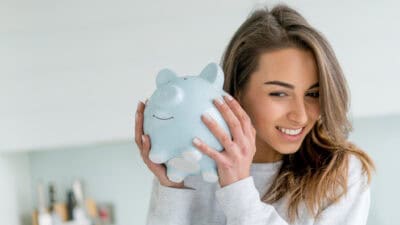Most of our readers would be familiar with exchange-traded funds (ETFs) and listed investment companies (LICs) by now.
They're both handy ways to get diversified exposure to the share market and to outsource the study involved in picking individual stocks.
LICs are the more 'traditional' concept, acting like private funds in that they take a higher commission in return for portfolio manager expertise.
ETFs have made their name in recent years as 'index' or 'passive' funds. They're well-known for allowing everyday folks to put their money in to just follow a particular index while paying extremely low fees.
Even the most famous stock-picker of them all — Berkshire Hathaway Inc (NYSE: BRK.A) (NYSE: BRK.B) boss Warren Buffett — is a big fan of them.
"A low-cost index fund is the most sensible equity investment for the great majority of investors," he said in Vanguard founder Jack Bogle's book The Little Book of Common Sense Investing.
"By periodically investing in an index fund, the know-nothing investor can actually out-perform most investment professionals."
ETFs have thus become massively popular, with 2020 seeing all sorts of records broken for the industry.
The rise of active ETFs
Of course, if a concept becomes popular with punters, the industry is spurred on to create more products.
So it feels like in the last couple of years, there are new 'active' ETFs launched every week.
These ETFs act like LICs in that they require some sort of stock-picking expertise.
Often the fund follows a particular theme, such as ethical investing, Asian technology, or value stocks.
This means some subjectivity — or at least analytical smarts — are required to know which shares to include into the fund. And which stocks to sell.
So if you now have both LICs and ETFs that are actively managed, what is the difference?
LICs vs active ETFs
Marcus Today director Marcus Padley last week explained the distinctions between the two products.
The big difference is that LICs are a 'black box', while ETFs are more transparent.
"The LIC may or may not be that transparent with reporting its holdings or its NTA [net tangible assets]/performance figures and the fees are much higher — plus they usually get a kicker if they outperform," Padley said.
"An active ETF though gives you the power of an actively managed fund with greater disclosure of the underlying assets and the NTA at regular intervals. No 'trust me I have a black box' investment philosophy."
The way the share prices are set is also a massive difference.
LIC share prices, like for any other listed business, fluctuate according to supply and demand. This means the fund might hold $1 worth of assets per share but the stock could be selling for 80 cents… or $1.20.
Meanwhile, ETFs have their prices artificially maintained at roughly what the underlying asset value is. This is done by "market makers", who have buy and sell mechanisms in place to achieve price stability.
"So, no requirement on the LIC to provide liquidity and close up a discount to NTA and arbitrage any price discrepancy away."
LICs that sell for less than they're worth
Theoretically, an LIC that's trading at a heavy discount to the NTA could be bought out by a big fish to be liquidated for profit.
"LIC managers tend to get upset when their fund gravy train gets taken away from them," said Padley.
"They try to close up the discount through better communication (more updates) buybacks and even directors buying the shares. They try but… sometimes fail miserably."
For some investors, this complication would cause them stress and they would prefer to park their money with ETFs, knowing the stock price always reflects the underlying worth.
But according to Padley, LICs can sometimes offer up tasty bargains.
"If there are transparent, good communicators and still trading at a big discount with known assets that are liquid, I have referred to them in the past as the Hot Tub Time Machine," he said.
"Sometimes especially during periods of extreme loss of confidence, the LIC gets whacked whilst the assets it owns bounce quickly and so buying the LIC at a discount is like being able to go back in time to before the rally and buy those stocks."
In fact, this is what famous investor Geoff Wilson is attempting to do with his new WAM Strategic Value Limited (ASX: WAR), which opened its initial public offering (IPO) this week.
This will be, if you can believe it, a $225 million LIC that will buy up shares of other LICs that are heavily discounted from NTA.
"Essentially, we are focused on identifying and investing in $1 of assets for 80c," Wilson said in the prospectus.
"Our experience and expertise in managing closed-end vehicles provides us with a unique methodology to identify and benefit from LIC and LIT market mispricing opportunities."
WAM Strategic Value Limited shares will start trading on the ASX on 25 June.









